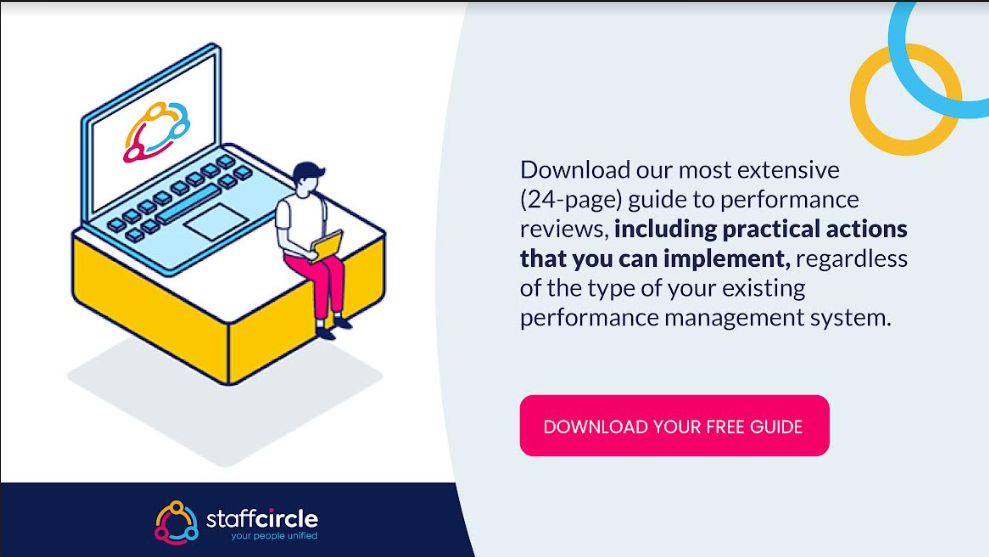As the weather turns colder and days grow shorter, many companies struggle to deal with increases in sickness absence in the workplace. Colds and flu start to do the rounds, while Seasonal Affective Disorder may cause mental health issues requiring time off.
Studies have shown that employees take 53% more sick days in January, compared to other months of the year, making it the toughest month for businesses to help ensure their staff remain healthy and motivated.
Companies should also be aware of employees who continue to work despite suffering from a minor illness, known as presenteeism, but who are afraid to take time off due to work pressures and the potential impact on their own performance management reviews.
6 top tips to help you combat an increase in winter sickness absence
1. Encourage sickness absence when necessary
Having a policy of ‘stay at home when you’re ill’ and a culture that embodies this, while putting the employees’ health at the forefront, will help to ensure that staff maintain a healthier lifestyle and reduce the spread of illness in the workplace.
2. Promote a culture of exercise
Regular exercise is the most effective way to build up your defences against winter viruses, so promoting a company culture that actively encourages employees to work out is a surefire method of building a healthy workforce resilient to winter sicknesses.
3. Encourage a healthy diet
With staff spending a significant part of their day in the workplace, employers have an opportunity to encourage healthy eating and positively influence their eating habits. Replacing sugary snacks with bowls of fruit is one way to help. Another idea is to create a centralised place for staff to share healthy recipes (for instance on your company’s intranet). This can further promote a culture of healthy eating and reduce the risk of major illnesses.
4. Prevent rather than cure
The vast majority of infectious diseases are transmitted by touch. So it’s worth instilling a regime of cleanliness in your company’s culture. Making available anti-bacterial hand gel would be a good start as well as encouraging your employees to keep their workstations clean. Some companies also offer flu jabs for their employees, helping reduce the spread of the virus and therefore reducing the number of absences.
5. Discuss regular sickness absence with your employees
If an employee is taking recurrent short term absences you should discuss the issue with them and provide support.
Ensure confidentiality and if necessary keep a record of the conversation on your performance management system.
6. Identify and address the symptoms of Seasonal Affective Disorder
Harder to spot but equally detrimental to any business’s winter absence rates is Seasonal Affective Disorder, a depressive disorder that commonly affects people during the winter months.
Managers who recognise the symptoms of SAD in one of their employees should consider reducing their workload or adjusting their schedule.
The Bradford Factor: A scientific approach to absence management
Sickness absence leads to mounting costs for employers. This is why savvy companies are utilising more sophisticated methods of monitoring employee absence.
Tracking and monitoring employee absence in a performance management and HR suite is crucial if companies want to keep a lid on the potentially exorbitant costs of sickness absence.
This is where the Bradford Factor comes in. Representing the number of unplanned absences an employee has in a year, the Bradford Factor allows managers to assess the potential impact absence is having on the overall running of the business.
Originally developed at the Bradford University School of Management in the early 1980s, this system allows managers to run insightful reports from their HR tools, better-identifying employees who have a high volume of absences and giving them the information they need to deal with the situation.
The more absences an employee clocks up, the higher the Bradford Factor score. Essentially, the score given provides managers with potential courses of action, depending on how extreme an employee’s score is.
For example:
| Score | Potential action |
| 0-49 | None required |
| 50-124 | Consider a verbal warning |
| 25-399 | Consider a first written warning |
| 400-649 | Consider a final written warning |
| 650+ | Consider dismissal |
Considerations when using the Bradford Factor
It is inadvisable to use the Bradford Factor in isolation, but combined with return-to-work interviews and regular one-to-one conversations with employees, as part of your company’s performance and HR tools software it offers managers a useful early warning tool.
Ultimately, it is up to managers to be in personal contact with their employees, especially when pre-existing health problems are present and the employee is likely to require more time off than average.

Return to work interviews and how to structure them
One of the most commonly used methods for combating absence rates is the return to work interview. Effective for dealing with both short- and long-term absences, the return to work interview has been proven to cut sickness absence rates.
A return to work interview is a common HR process, which involves checking in on a returning employee before they get stuck back into their work. While conducting such an interview is not a legal requirement, it is becoming standard practice for larger companies in the UK.
Research shows that carrying out a return to work interview is one of the most effective ways to manage attendance and reduce absence, according to Fit For Work, a Government-funded initiative offering free expert advice about work-related health.
There are many benefits to conducting return to work interviews. These include:
- Making sure employees really are well enough to get back to work
- Updating employees on what’s happened in their absence
- Identifying whether any workplace adjustments are needed
Preparing for the return to work interview
Managers should be fully prepared before conducting a return to work interview, reviewing attendance records and any notes relating to previous absences.
Structuring the return to work interview
Welcome back
It is important to ensure an employee feels welcome when returning to work after an absence. This is one of the key purposes of a return to work interview. If you get this wrong, you risk damaging that employee’s confidence which may, in turn, lead to more absence.
Ask if they are currently fit to work and if there is any doubt consider the possibility they require more time off. Do not necessarily rely on the employee’s account of their fitness for work. The employer also has a duty of care to assess an employee’s fitness for work.
Check whether they have visited their doctor, keep a record of sick notes and any other information you have from your review of their absence records that might be relevant to ongoing health issues.
Looking ahead
Once you have established that an employee is fit for their return to work, there are various actions that should be implemented to ensure a smooth transition.
If the most recent absence is part of a string of connected absences, it is important to establish whether there is an ongoing health issue that needs to be discussed further. For ongoing health issues, it may be necessary to make workplace adjustments to help people perform more productively.
For longer-term, more persistent absences, it may be necessary to schedule a review, and any new information should be logged in your HR tools.
After the meeting
It is important to remember that both employer and employee must sign the return to work form. Once this has happened be sure to log the results, flagging any work or disability-related issues while ensuring that any other cause for concern has been identified.
Key Performance Indicators (KPIs)
Once employees have returned to work after time off for ill health or any other reason, it’s time to establish key performance indicators (KPIs) to enable a comprehensive system of performance measurement and target-setting.
KPIs should be aligned to the top-level goals of your company, be measurable and capable of being continuously monitored.
Effective KPIs will keep your staff and company on track to achieve objectives, spot problems and opportunities and keep your projects in line with their core goals.
Choose measures that best drive success and improve performance. Bear in mind that targets should be achievable to build confidence and improve morale.
This is especially important for ensuring that people returning after an absence feel they are a productive part of their team.





